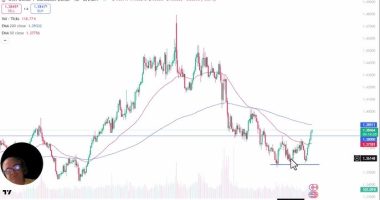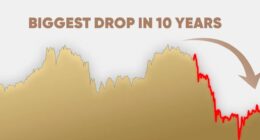In a strategic move that has sent ripples across the cryptocurrency landscape, Ripple is set to permanently lock up a massive 126.7 million XRP tokens. This action is part of a business combination agreement where the blockchain company will exchange the tokens for equity shares in an acquiring company, effectively orchestrating a potential supply shock for its native digital asset.
The announcement, highlighted by industry expert Chad Steingraber, signals a pivot towards leveraging XRP’s value not just as a liquidity tool, but as a strategic corporate asset. By converting a significant token haul into company ownership, Ripple is demonstrating a novel use case for digital currencies in high-level corporate finance and mergers & acquisitions.
The Mechanics of the Lock-Up: From Tokens to Equity
The process is designed to be definitive and impactful. The 126.7 million XRP tokens are slated to be “canceled” or permanently removed from circulation upon the finalization of the deal. In their place, Ripple will receive shares in the acquiring entity.
This transaction achieves two critical objectives:
-
Scarcity Creation: It directly reduces the total circulating supply of XRP available on the open market.
-
Value Shift: It transforms liquid digital assets into long-term corporate equity, aligning Ripple’s success with that of its new partner.
For investors seeking to understand the potential market impact of such supply reductions, resources like CoinDesk’s “Coin Economics” section provide excellent primers on the relationship between scarcity and asset valuation.
The “Supply Shock” Theory: A Calculated Play on Scarcity
In financial markets, a supply shock occurs when a sudden change in the availability of a commodity causes a significant price dislocation. By voluntarily locking away over 126 million XRP, Ripple is intentionally creating a scenario where available supply could tighten considerably.
The fundamental economic principle of supply and demand suggests that if demand for XRP remains steady or increases while the circulating supply shrinks, upward pressure on the price is a likely outcome. This strategy of creating artificial scarcity is a page taken from the playbook of other asset classes and is a topic frequently analyzed by outlets like Bloomberg’s Crypto Newsletter.
A Pattern of Strategic Momentum
This lock-up is not an isolated event but part of a broader, bullish pattern for Ripple and XRP. The news follows a significant vote of confidence from the Japanese financial giant Gumi, which announced a substantial $17 million investment in XRP. As reported by Reuters, Gumi’s strategy is heavily focused on bolstering global remittance corridors, a core utility of the XRP ledger.
Furthermore, Ripple has a documented history of managing XRP supply through its escrow system, a practice detailed in its quarterly Markets Reports. This latest move to lock tokens for equity shares represents an even more aggressive and sophisticated approach to supply-side management, moving beyond scheduled releases to strategic, permanent removals.
Broader Implications: XRP as Corporate Currency
This transaction sets a powerful precedent. It positions XRP not just as a bridge currency for cross-border payments, but as a legitimate tool for corporate treasury operations and acquisitions. This elevates XRP’s profile from a mere medium of exchange to a capital asset, potentially attracting a new class of institutional investors who view it as a vehicle for strategic investment and corporate growth.
Market Outlook: Navigating the New Dynamics
While the long-term price impact remains to be seen, the immediate effect has been a surge of optimistic speculation within the XRP community. Analysts are watching closely to see if this calculated reduction in supply, combined with growing institutional adoption, will create the sustained value appreciation that theory suggests.
If successful, Ripple’s strategy could inspire other blockchain companies to explore similar uses of their native tokens, fundamentally changing how digital assets are integrated into corporate finance. For now, the locking of 127 million XRP marks a bold experiment in value engineering, one that the entire crypto market will be watching unfold.










